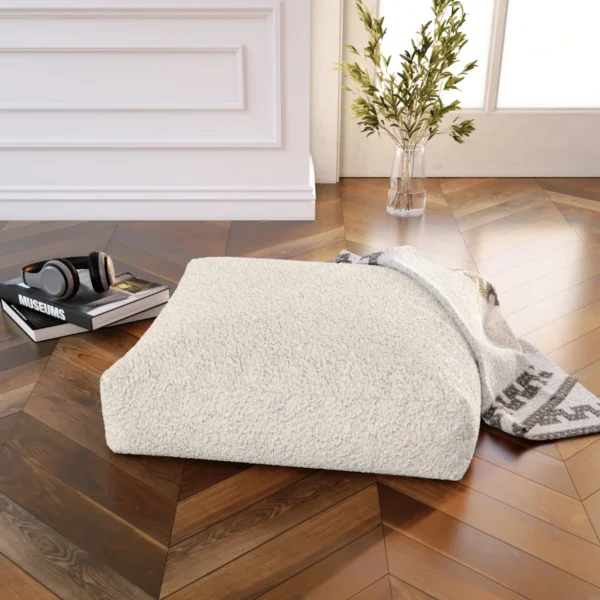Gen Z Design Language: What Younger Designers Are Doing Differently

Every generation leaves its mark on design, but Gen Z isn’t just updating the look , they’re rewriting the rules. For them, design isn’t about polished perfection or legacy norms. It’s about authenticity, individuality, and meaning. They grew up with limitless inspiration at their fingertips and a world in flux outside their windows. So, their design language is both bold and deeply personal , fluid, emotional, and unafraid to challenge what came before.
Where past aesthetics were defined by minimalism, luxury, or tradition, Gen Z’s style thrives in contradiction: nostalgic yet futuristic, playful yet political, digital yet handmade. It’s an era of color, imperfection, rebellion, and purpose , a design movement born not in studios, but in bedrooms, online communities, and hybrid workspaces. Here’s how the new generation of designers is doing things differently , and what we can learn from their evolving creative code.
1. Designing for Identity, Not Perfection

Gen Z designers create to express, not impress. Their work celebrates personality over polish , imperfections, quirks, and raw textures are deliberate choices, not mistakes. Spaces and objects often reflect layered stories rather than coordinated palettes. It’s about who they are, not what’s trending. Design becomes self-portraiture: gender-neutral, fluid, emotionally honest. Their rooms, interfaces, and art speak a language of individuality, rejecting the pressure to fit into a single aesthetic box.
2. Dopamine Décor

Gen Z designs for happiness first, and dopamine décor turns that mindset into a visual language. It’s about creating spaces that spark joy through color, texture, and spontaneity rather than following strict design rules. Think bold pastels, playful furniture, and unexpected pattern pairings that lift the spirit as soon as you walk in. A neon lamp beside a floral sofa or a cobalt mirror against a soft peach wall tells a story of confidence and fun. Every choice feels intentional yet free. For Gen Z, décor is emotional expression — a daily dose of color therapy for the soul.
3. Nostalgia With Remix

For Gen Z, nostalgia isn’t about recreating the past, it’s about reinterpreting it with confidence and wit. This generation blends mid-century silhouettes, seventies warmth, and Y2K boldness into spaces that feel both familiar and fresh. Think velvet sofas in burnt caramel beside sculptural bouclé chairs, or a retro-inspired rug set under a futuristic brass coffee table. Every choice nods to memory but resists imitation. The result is design that feels cinematic yet lived-in , like stepping into a moment you somehow recognize but have never seen before. Gen Z’s remix of nostalgia is storytelling through contrast, where comfort meets curiosity in perfect rhythm.
4. Playful Color, Fearless Expression

Neutral minimalism is out; bold individuality is in. Gen Z designers treat color as emotion, not decor. Acid greens, lavender, clay pinks, and cobalt blues coexist joyfully in one space. They experiment with unconventional palettes that feel spontaneous yet expressive. This chromatic courage mirrors the way they live , loud, layered, and unapologetically personal. Where earlier generations aimed for calm cohesion, Gen Z thrives in expressive chaos. Color is no longer a backdrop , it’s a voice.
5. Soft Forms and Fluid Lines

Gen Z designers are trading sharp geometry for softness. Curved sofas, rounded tables, and wave-edged mirrors bring movement into otherwise static rooms. These shapes feel approachable and calm, breaking the hard lines that dominated millennial minimalism. By echoing organic contours from nature, curves add warmth and humanity to modern spaces. The result is design that looks less engineered and more felt , a visual language that invites comfort and fluidity rather than control.
6. The New Neutrals

Neutral tones are being reborn through Gen Z eyes. Instead of sterile white or grey, they choose earthy clays, oat beige, mushroom taupe, and chalk pink , colors that soothe rather than sanitize. These shades act as a quiet backdrop for bolder textures and eclectic finds. In small apartments or creative studios, soft neutrals make visual breathing space without muting character. This generation uses restraint not as minimalism, but as mindfulness , proof that calm can still have personality.
7. Light Woods, Bright Minds

Blonde woods like ash, birch, and pine define Gen Z’s sense of natural optimism. These pale tones bounce light around a space, softening edges and uplifting mood. When paired with linen, rattan, or muted metal accents, they create interiors that feel both grounded and open. This look borrows from Scandinavian calm and Japanese balance , two aesthetics rooted in clarity and craft. Light wood signals a move toward honesty in materials: simple, sustainable, and quietly confident.
8. Secondhand as Style Statement

For Gen Z, secondhand isn’t second best , it’s the new badge of taste. Thrifted furniture, flea-market art, and online vintage finds create layered rooms full of memory and mix. Every piece carries its own past life, adding authenticity that is impossible to buy new. This approach blends sustainability with self-expression: a curated collage rather than a showroom set. It’s anti-fast-furniture, pro-storytelling. The result feels raw, real, and refreshingly personal , proof that style today is less about status and more about soul.
9. Design That Plays

Play isn’t childish , it’s emotional intelligence in form. Gen Z designers treat playfulness as philosophy, designing spaces and objects that spark curiosity, humor, and delight. Furniture doubles as art, colors clash with intention, and proportions bend the rules. A chair might look cartoonish; a lamp might resemble a balloon. This lighthearted aesthetic is a rebellion against design’s past seriousness. It’s joy with depth , proof that creativity doesn’t need to be solemn to be meaningful. Gen Z’s playfulness is their protest against burnout , turning design into a daily reminder that fun still matters.
10. Imperfection as Aesthetic

Gen Z designers are embracing imperfection as authenticity. Visible brushstrokes, hand-drawn fonts, asymmetry, and mismatched furniture reflect an honesty that digital life often lacks. They’re pushing back against the algorithmic perfection of feeds and filters. The result? Work that feels real, human, and comforting in its flaws. It’s the beauty of “almost.” In their hands, imperfection becomes a rebellion , proof that sincerity is still modern.
11. The Rise of the “Anti-Design” Movement

Rebellion is part of Gen Z’s DNA , and nowhere is that clearer than in “anti-design.” This movement rejects clean lines and predictable grids in favor of disorder, distortion, and experimentation. Think chaotic typography, clashing colors, and collage-style compositions that dare you to look twice. Anti-design is not about carelessness; it’s about freedom. It’s a visual protest against aesthetic conformity , design as disruption, not decoration.
12. Art as Identity

For Gen Z, art isn’t just décor,it’s declaration. Walls become personal timelines, curated with intention rather than coordination. Each piece,digital, handmade, or thrifted,tells part of a larger self-story. They mix mediums and eras without hesitation: a bold AI-generated print beside a vintage tapestry, a zine collage near a minimalist sculpture. The goal isn’t aesthetic harmony but emotional truth. Their homes feel alive with visual conversation, reflecting not perfection but presence. Art becomes language, identity made visible through color, form, and feeling.
13. Hybrid Functionality

For Gen Z, design is never one-dimensional. Their generation grew up in multitasking worlds,bedrooms that double as studios, kitchens that moonlight as offices,so their spaces evolve with them. Hybrid functionality means creating pieces that adapt to shifting needs: a desk that transforms into a dining table, storage built into seating, or a shelf that doubles as art. This flexibility isn’t just practical; it reflects a mindset that rejects rigidity. Rooms flow between focus and rest, work and play, without losing aesthetic cohesion.
14. DIY as Design Language

For Gen Z, design doesn’t start in a showroom, it starts at a flea market, a thrift shop, or a weekend DIY project. This generation finds beauty in reinvention. They paint over vintage cabinets, rewire old lamps, and give discarded furniture new life with a fresh color story. It’s sustainability, yes, but it’s also storytelling. Each object carries a past, layered with their own touch of irony, humor, or nostalgia. Thrifted design is anti-cookie-cutter: it’s personal, imperfect, and proudly one-of-a-kind. For Gen Z, creativity isn’t about what you buy — it’s about what you make out of what already exists.
15. Emotional Minimalism

Minimalism once meant stripping life down to essentials; for Gen Z, it means keeping only what feels essential. Their spaces are calm, but not cold , layered with soft textures, personal mementos, and gentle light. Emotional minimalism isn’t about absence; it’s about atmosphere. A neutral wall may frame a single, meaningful artwork. A tidy shelf might hold a handwritten note or ceramic mug that grounds the day. The focus is mindfulness through design , editing not for perfection, but for peace.
16. Designing for Mental Wellness

Gen Z designs with mental well-being at the center, not as an afterthought. They understand how light, sound, and texture affect mood , choosing warm illumination over harsh glare, natural materials over plastics, and gentle acoustics that quiet the mind. Corners become nooks for reflection, windows are treated as therapy for light and air. The goal isn’t luxury; its balance , interiors that protect energy rather than drain it. In their philosophy, beauty and wellness are inseparable. A thoughtfully designed room becomes a daily act of care, a reminder that calm can be crafted, one space at a time.
Wrap-Up
Gen Z isn’t just redefining design; they’re redefining meaning. Their spaces speak of identity, inclusivity, and emotion , where sustainability meets self-expression, and beauty is measured by honesty. This new design language isn’t ruled by trends or traditions, but by values: authenticity, adaptability, and awareness. At Home Designing, we celebrate this evolution , where creativity becomes connection, and design becomes dialogue. Because the most inspiring interiors today aren’t about status or perfection; they’re about story, purpose, and the quiet confidence of being unapologetically yourself.







